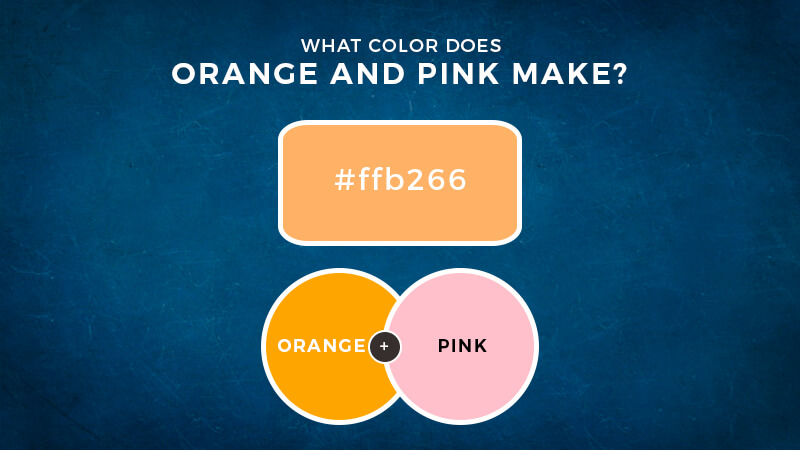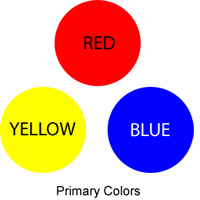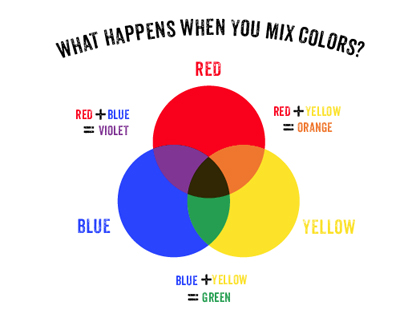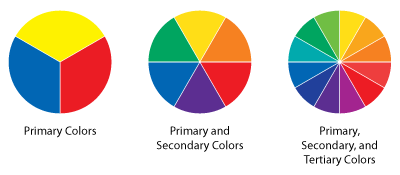Pink and Orange Mixed! What Color Do Pink and Orange Make?
Curious as to what color will appear when you mix pink and orange? Although the two colors are popular on their own, mixing the two to create a new pigment remains an unpopular practice in arts and fashion at large.
However, unknown to many, this unique color combo has long been part of their day-to-day surroundings.
From the enigmatic hue of the sunset, and the tender vibe of salmon, to the alluring color of a flamingo’s feathers, the orange-pink mixture lies at the heart of the most beautiful natural scenes that are visible in the physical world.
If you’re eyeing to replicate this captivating color combination in your artwork, it is only natural to first identify what exactly pink and orange create when mixed together.
To help you with that, here is a brief guide that will lead you to the answer and how can you take advantage of this mixture while practicing and improving your craft.
Read on …
The Color Wheel: The Key to Understanding Color Mixture
As you might remember, mixing colors is an essential practice in arts and design. Not only does this help artists expand their color choices to avoid repetition, but it also lets them communicate their thoughts clearer through the manipulation of colors.
However, since each pigment relays a distinct message and vibe, it is not advisable to simply mix and match any set of colors you come across, as some combinations may only negate each other.
Fortunately, through a tool called the “Color Wheel,” artists and designers are given an illustrative guide that depicts the relationships of colors and how to properly mix and match each of them.
Introduced in 1666 by Isaac Newton, the color wheel serves as a circular map of the color spectrum designed to help artists identify what colors look good together.
Within the arrangement, colors are classified into three categories: primary, secondary, and tertiary.
Primary Colors
Considered to be the “primary” form of all colors, this category houses the colors red, yellow, and blue.
They are recognized to be the original parents of all other colors, as they are the three primary ingredients from which all other pigments are created.
Secondary Colors
Next comes what we call the “Secondary Colors,” which cover all pigments created by mixing two primary colors together.
These include the color orange, created by mixing yellow and red; the color purple, which is the result of combining red and blue; and the color green, which is the product of blending blue and yellow together.
Tertiary Colors
Lastly, the “Tertiary Colors” are those that are created when a primary color is mixed with a secondary color. These include the colors red-orange, red-purple, blue-purple, blue-green, and yellow-green.
Relationship with Colors
As stated earlier, the color wheel helps artists and designers identify the relationship between each color.
This is because each pigment is arranged in a way in which their position indicates how they are related to one another.
Particularly, the colors are arranged in a way to suggest whether they share an analogous or complementary type of relationship.
Analogous Colors
To explain simply, colors that are positioned next to each other on the color wheel are called “Analogous Colors.”
These are the types of colors that display close relationships with one another.
For example, the colors yellow, green-yellow, and green are classified as analogous colors as all three offer a function or a feature that is comparable to one another.
Complementary Colors
Meanwhile, colors that are positioned exactly opposite of each other on the color wheel are classified as “Complementary Colors.”
While analogous colors are characterized by their close relationships, complementary colors are completely different from each other.
Because of their high contrast, putting them together can help make each appear brighter, or they can be mixed to create effective neutral hues.
What Color Do Pink and Orange Make?
Now that you’ve had a brief recap of the color wheel, you might have already realized that orange is a product of mixing red and yellow together.
Pink, on the other hand, is only a paler version of red, thus, it can be created by mixing red with white.
Once you’ve created the two colors, it’s now time to see what pigment they will specifically create when mixed together.
Since the colors orange and pink are positioned near each other on the color wheel, they are most likely analogous to each other.
This means that they share something in particular (which is the color red!).
This already suggests that mixing them together will create a new pigment that is somewhat reddish in color… and that is the color peach.
Thus to answer your question orange and pink mixed together make peach.
Conclusion
Who says orange and pink don’t make a good combo? Whether subtle or grand, mixing these two colors together promises a peachy result that is best to apply to your home ideas, style inspiration, and art experimentation.
We hope you learned a lot from this article!
Read Latest Posts

Hi, I'm Anthony Tran! Welcome to my site. I live in Arizona and am obsessed with all things related to building an Online Business and working from home. Learn about my journey here.
Follow Online








